Machine tools
THK’s linear motion systems contribute to the guide portions that determine the machining accuracy of machine tools.


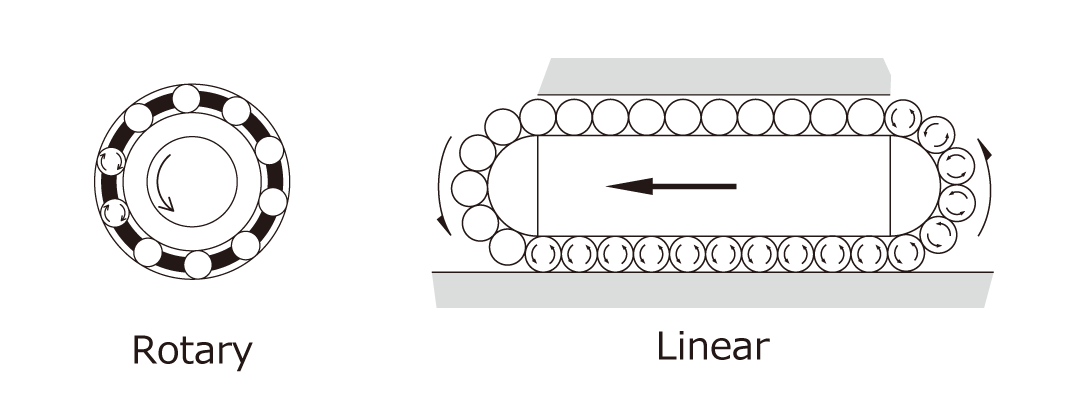
A linear guide is a machine element that utilizes bearings, which were developed for rotary motion, in order to move heavy objects easily in a straight line. It is referred to as a “recirculating linear ball bearing” by ISO and JIS, and “linear guideway” by the Japan Machine Tool Builders’ Association. THK CO., LTD. calls this the LM Guide (Linear Motion Guide). Other names like “linear motion ball guide” exist, and it is even referred to as a “linear bearing” in the sense that it is a bearing for linear motion as opposed to rotary motion.
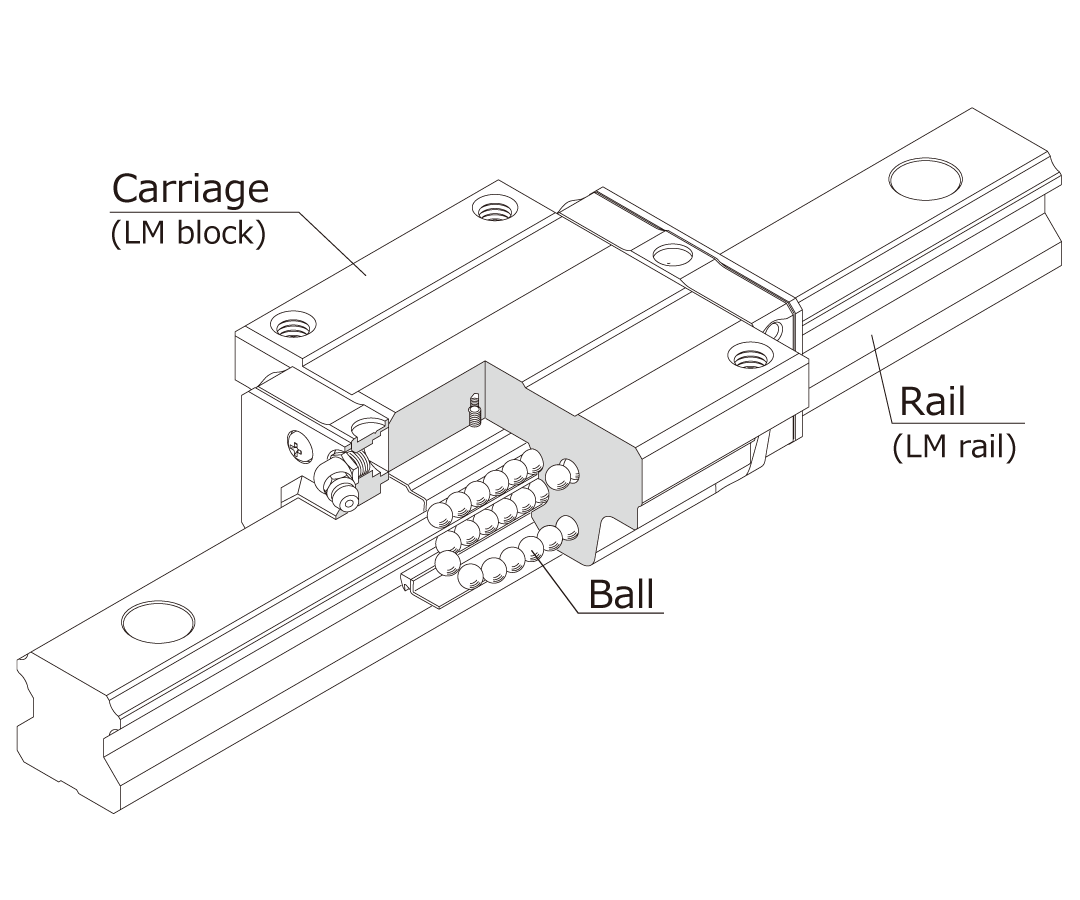
The linear guide largely comprises three components: a mobile carriage, a rail that supports the movements of the carriage, and balls. Linear motion is enabled by attaching a mechanism for recirculating the balls.
THK's LM Guide refers to these parts as the LM block and LM rail.
The history of the linear guide goes back to 1944, when the ball bushing was developed in the United States as the first linear motion rolling guide. The ball bushing contains balls as rolling elements between a cylindrical shaft and sleeve type nut. The balls recirculate with the movement of the nut, which enables infinite linear motion. A problem with the ball bushing was that the load capacity was low because the balls make point contact with the shaft and nut, and the contact surface area is small. In addition, the nut rotates when a moment (torque) acts on the shaft, which means two or more shafts become necessary to keep it from moving out of the travel direction. This presented an obstacle to compact machine design.
The ball spline was developed to overcome these challenges, featuring arc-shaped raceways ground into the shaft and nut. This changed the point contact between the balls and raceways into surface contact, which enables the ball spline to bear larger loads than the ball bushing. In addition, because the balls are contained between the raceway surfaces on the shaft and nut, the nut is prevented from rotating on the shaft. This meant only one shaft was needed to guide linear motion, and it could transmit torque.
The first ball spline had a problem with clearance occurring, and it was the search for a solution that led Hiroshi Teramachi (the founder of THK CO., LTD.) to develop the angular ball spline in 1971. The angular ball spline features protrusions on the nut and shaft raceways to provide angles that press on the balls, which eliminate the clearance that occurred with the conventional ball spline.
Compared to the ball bushing, the ball spline drastically increased the load capacity and provided smoother, clearance-free motion. However, because it was used with the shaft fixed on both ends, there were times when the ball spline could not support its true potential capacity during practical use, so its applications were limited. Then in 1972, Hiroshi Teramachi cut the ball spline nut and used that freed-up space to mount the shaft on a base, thus creating the linear motion ball guide. The world's first linear motion ball guide (linear guide) was the Model LSR. By attaching a base, the ball spline shaft that used to float in the air when both ends were secured was now integrated with the mounting surface as a rail, which eliminated the loss in precision caused by deflection. In addition, the creation of a single block by fixing a housing onto the nut made handling easier because mounting from the top became possible just like it was with the rail. This became the basic form of the modern linear guide.
Later in 1973, THK developed the Model NSR-BC by combining the spline shaft and mounting base into the LM rail. Further improvements and combining the spline nut and housing into the LM block led to the development of the Model NSR-BA in 1975.
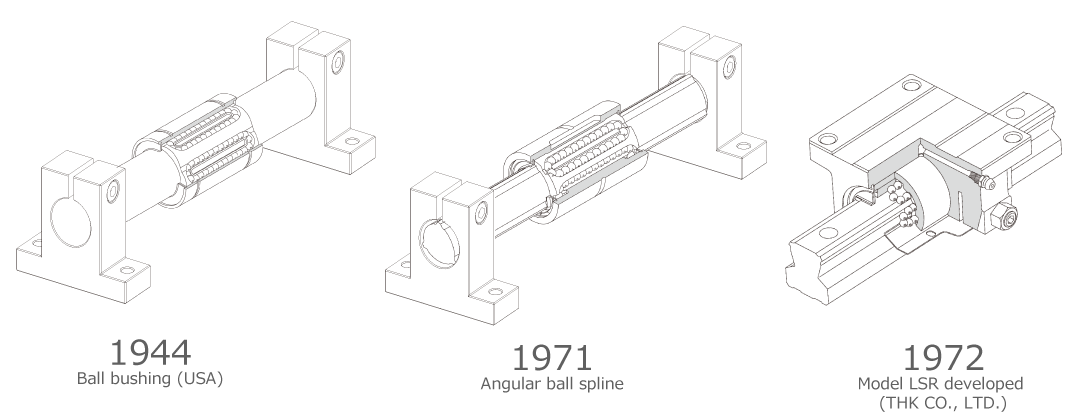
Linear guides play the role of easily and smoothly guiding linear motion while bearing loads in order for machines to operate precisely and efficiently. They are an indispensable part of linear components in devices such as machine tools and semiconductor manufacturing equipment. Recently, they have also been used in railway vehicles, buses, automatic doors, seismic isolation systems, and other consumer fields.
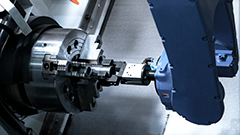
THK’s linear motion systems contribute to the guide portions that determine the machining accuracy of machine tools.

THK products are also suited for computers, cell phones, flat-screen TVs, and other cutting-edge technology.

THK products grant robot joints superior precision, rigidity, and high-speed performance.

THK products have been widely adopted in railway vehicles and automobiles, including in critical vehicle components.

THK products are also used to support heavy loads in outdoor environments covered in water and mud.

THK products designed for use in special environments have been used in everything from fuselage manufacturing equipment to seating mechanisms.
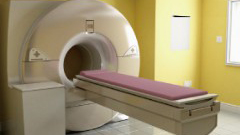
THK products meet the high standard of reliability needed for medical devices with advanced electronics.


Products that protect lives, property, and livelihoods from the threat of earthquakes

Home kitchens that adapt to just the right height

Faster turns around tighter curves

Producing thrills and excitement with both intensity and precision

National Astronomical Observatory of Japan
Linear guide mechanisms (linear motion systems) are used to move or position objects along a straight line with precision. Their main functions are split between guiding and driving elements. In particular, they refer to a system made up of machine elements that utilize rolling technology to move objects accurately in a straight line. The linear guide is one machine component that can be used for the guiding element.
Some of the many other possibilities include ball splines, linear bushings, slide rails, and cross-roller guides.
The driving element can be a machine element that converts torque from a motor into linear thrust, such as a ball screw or belt, or it could be hydraulics, pneumatics, or a linear motor. These components are combined in the mechanism design to achieve the precision, speed, and load requirements for the application. These mechanisms were developed around machine tools in particular, and they have been adopted for use in other types of industrial machinery as well as linear motion parts in consumer fields. "Linear motion system” is a registered trademark of THK CO., LTD. We also provide a lineup of machine elements that utilize the linear motion system to enable other types of motion such as arcs, or to combine linear and curved motion.
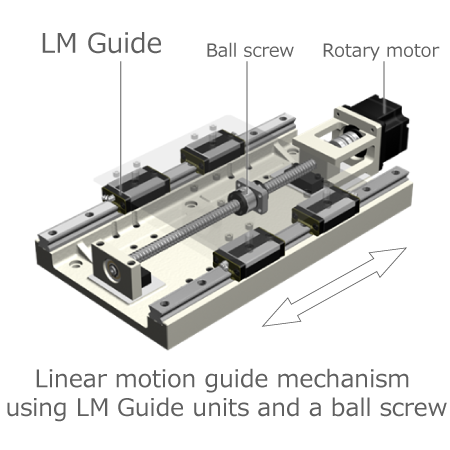
As linear guides are rolling guides, they have no clearance and lighter movements than sliding guides.
Rolling guides such as cross-roller guides and ball guides have finite strokes, but the linear guide’s balls recirculate endlessly, which means that the stroke can extend to however long the rail is made.
The linear guide's raceways are curved grooves, which provide surface contact between the balls and raceways. This makes the permissible load about 13 times greater than that of guide components with point contact, such as the linear bushing. As a result, a linear guide can achieve a similar permissible load as a point-contact type through a more compact design.
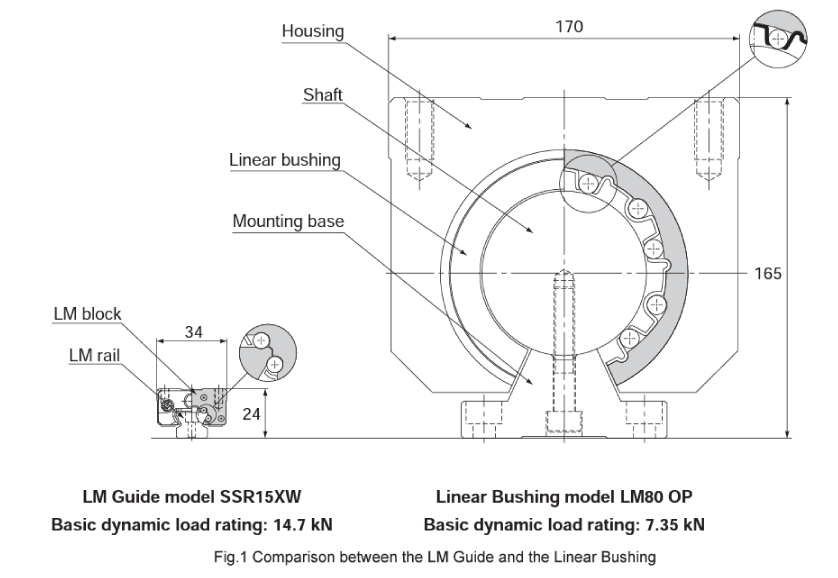
THK has been cultivating its technical expertise ever since 1972, when it developed the LM Guide and other linear motion systems. Even now, that core technology continues to redefine industry standards and enables THK to satisfy an ever-growing range of needs. These systems take the rotary principles of deep-groove ball bearings, the most economical and easy-to-use rotary bearings, and apply them to linear motion components.
By using balls and rounded grooves of approximately equal diameters, THK has been able to change how the balls and grooves contact one another, moving away from point contact and closer to surface contact. As a result, THK has been able to increase a ball’s permissible load by approximately 13 times as compared to a ball of the same diameter in a traditional linear motion bearing. The service life is also extended by a factor of 2,200. (The permissible load P in the diagram is 1.3 times that of P1.)
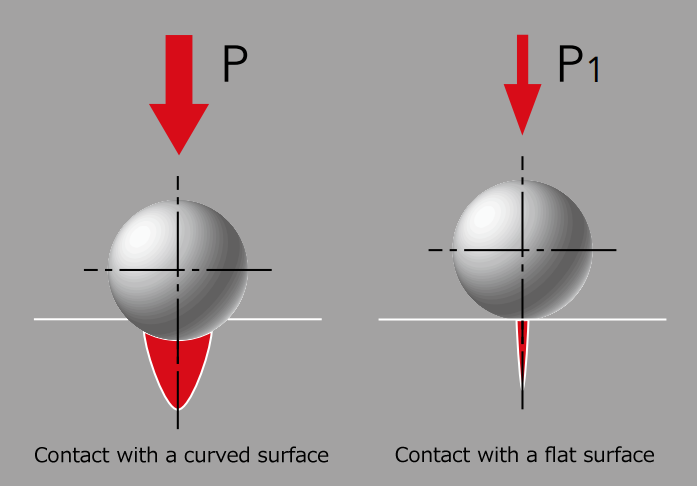
Many variations of the LM Guide are available to suit diverse applications. There are different categories of how loads are distributed, such as the radial load and four-way equal load types; categories based on shape, such as wide and miniature types; and more. In addition, the LM Guide featuring THK’s proprietary ball cage system helps improve equipment performance.
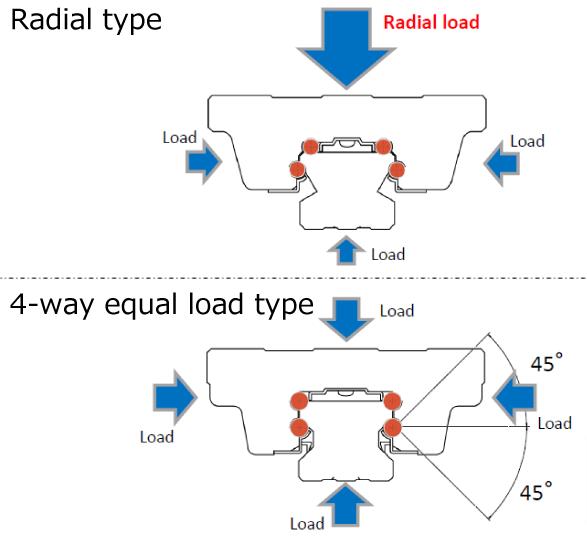
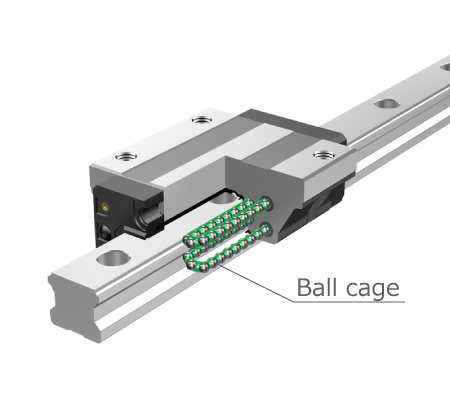
General LM Guide selection process
In addition, the product lineup also includes products that were developed from linear motion guide mechanisms, including non-linear products such as cross guides and curved guides, separate type products with two separated LM Guide units, and models with integrated gears.
One thing that can damage the LM block is the intrusion of foreign materials. THK offers accessories that suit a variety of conditions, including dust, cutting chips, and spatter. Foreign materials can also be prevented from entering via the rear surface of the block. Another cause of damage is insufficient lubrication, and to address this issue, THK offers lubrication devices that extend the maintenance interval for replenishing lubricant. There are also some LM Guide products available that come with an integrated linear encoder.
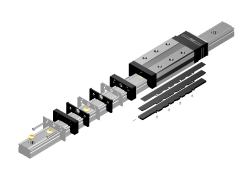
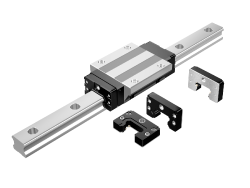
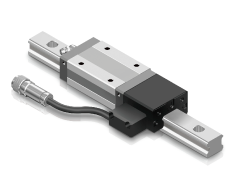
In the belief that the optimal place to manufacture products is the location of demand, THK manufactures the LM Guide at four factories in Japan (Yamaguchi, Yamagata, Gifu, and Mie) in addition to production facilities around the world.
THK also creates products with unique specifications in addition to the lineup available in the catalog. Let us know if the items in the catalog do not meet your needs, and we will investigate options for you.
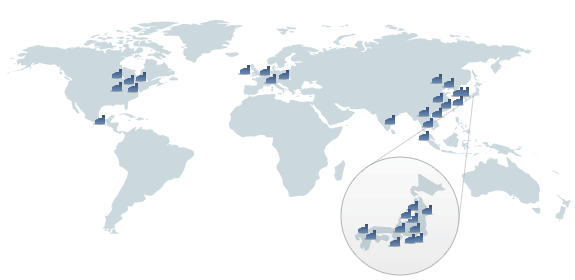
The LM Guide does not move on its own and requires some kind of power source. It can be moved by hand, but it is intended to be moved through mechanical means. Combining the LM Guide with a ball screw or another drive component will enable it to move the desired object easily and smoothly. In addition to single LM Guide units, THK also manufactures actuators that combine an LM Guide with a drive element.
OMNIedge is THK’s IoT service for manufacturing. This service eliminates the time and money it takes to select a sensor, develop an algorithm, and set up a network environment so it can be used right away. It is currently available not only for the LM Guide, but ball screws and actuators as well.

Learn more about the “OMNIedge” IoT service for manufacturing

Please refer to the General Catalog for the selection, dimensional drawing, dimensional table, model number configuration, etc. of the LM Guide.
View the LM Guide General Catalog in the THK Catalog Center
Based on your application and usage conditions, temporarily select a general model type and size. From there, we calculate the applied load, equivalent load, and static safety factor. If the static safety factor meets the requirement, we calculate the average load and nominal life to determine if it meets the desired service life.

Inputting the usage conditions into this tool will help you select the ideal product for standard model types. An easy selection mode is available to confirm a rough calculation, and once the model is chosen, a detailed selection mode is available for service life calculations and more.
Sign up to use the optimal product selection tool
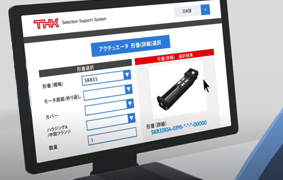
THK has established and manages the THK Group Green Procurement Guidelines to reflect the more stringent laws and regulations enacted in Europe and other regions as well as the requirement to manage the entire supply chain.
See the EU RoHS-Compliant Parts List for information about THK's compliance with the EU RoHS directive (regarding the 10 substances in Directive 2015/863/EU).
For inquiries about THK’s compliance with other environmental laws and regulations, please contact your THK sales representative or distributor.
A special feature where the LM Guide excels against other linear guide products is that the service life can be predicted. The THK Technical Support Site allows you to perform an easy online calculation of the product life that corresponds to the configuration of your device. Up to 10 calculation results can be saved and exported as a PDF. It is also easy to pull up results and recalculate them.
Sign up to use the service life calculator
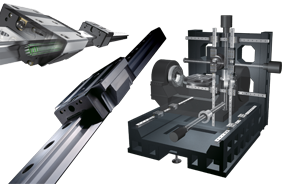
CAD files are essential to machine design. The THK Technical Support Site provides CAD downloads in a variety of formats, including DXF, STEP, IGES, and Parasolid. DFX files come in 2004 and later versions. Image formats such as JPEG and PNG are also available for use in documents.
Sign up to download CAD files
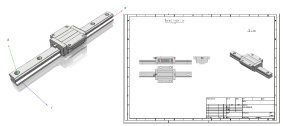

See the instruction manual for how to perform installation, lubrication, and general maintenance.
View the LM Guide instruction manual in the THK Catalog Center
You can view over 500 questions and answers related to engineering, design, troubleshooting, and more. They are organized by product group, or you can search the FAQ. See some example questions and answers
The THK Technical Support Site is a free-to-use service where designers of industrial machinery and robots or other users can register as members to access CAD files and online tools that are useful for selecting the optimal product model and calculating the service life. This website also allows users to request quotes and export parameter sheets. Simply sign up as a member and gain access to a variety of free services.
Sign up for the Technical Support Site
There are two main steps to mounting an LM Guide.
See the LM Guide General Catalog for information about LM Guide mounting methods.
Lubrication is crucial for the proper functioning of the LM Guide.
The THK Technical Support Site features the following documents, which are intended to help extend the service life of the LM Guide.
Technical information: LM Guide inspection tips to extend the service life
Technical information: Signs an LM Guide needs replacement
* To access the Technical Support Site, you must create a free account or log in.
The LM Guide’s performance can be maximized by using the right lubricant based on the application and purpose.
Lubricant can be split into the following general categories.
Each of these types of lubricant have their own special characteristics.
THK original grease optimized for linear motion systems
You can download the SDS (Safety Data Sheet) for the grease used to lubricate a product from the Technical Support Site.
* To access the Technical Support Site, you must create a free account or log in.
2-12-10 Shibaura, Minato-ku, Tokyo 108-8506
